[ad_1]
The lower abdomen is often a target for fat deposits. A sedentary lifestyle, excessive consumption of carbohydrates and metabolic disorders quickly lead to an increase in subcutaneous fat in the abdominal area. And how to deal with it at home – we’ll talk below and learn the best exercises for the lower abs.
Lower belly workout for home
The following exercises can be performed in turn, for example, perform some of them in one workout, and the second in the next. There is no need to overstrain the muscles with a large number of exercises; the main thing is to create a high-quality load on the target area. The number of repetitions in exercises with your own weight is selected individually.
On average, 15-30 repetitions in one exercise and 3 approaches are enough. You should not pump your abs more than three times a week. Also, in addition to the lower abs, it is important to pump up the upper part of the abs, as well as other muscles of the body that help accelerate fat burning.
1. Leg raise
By performing leg raises on a mat, you can pump up your lower abs at home, but this does not mean that the upper abs are not involved. On the contrary, the rectus muscle is only conditionally divided into the upper and lower parts, but it is the leg lifts that maximally involve this zone in the work.
When lifting your legs, the amplitude can be adjusted by lowering them not to the floor, but to an angle of 45 degrees, this will significantly reduce the load on the muscles, as well as the spine. It is important to avoid arching your lower back; doing the exercise incorrectly can lead to lower back pain over time. You can also lower one leg down at a time, and over time complicate the option.
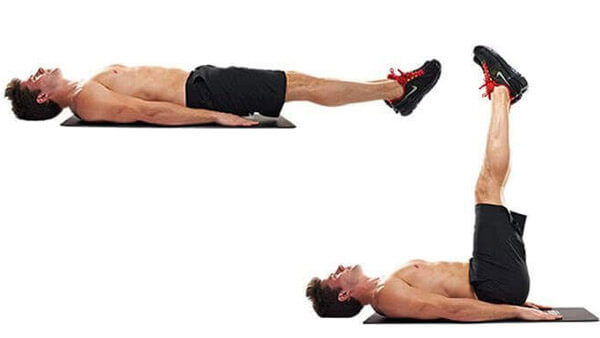
2. “Book”
This version of the “book” exercise is performed on weight – without touching the floor. This movement works the entire rectus ab muscle, but involves the lower portion as much as possible. To perform this option, you can sit on the floor, on a bench or any elevated surface. The main task is to maintain constant tension in the abdominal muscles without relaxing them in the lower phase of the movement.
When folding, you can rest on your palms, and ideally, open your arms to the sides at the bottom point, and touch your knees at the top phase. As you exhale, due to the abdominal muscles, the knees should be pulled towards the chest, and while straightening the legs, when opening the body, the abs should remain tense, holding the corner.
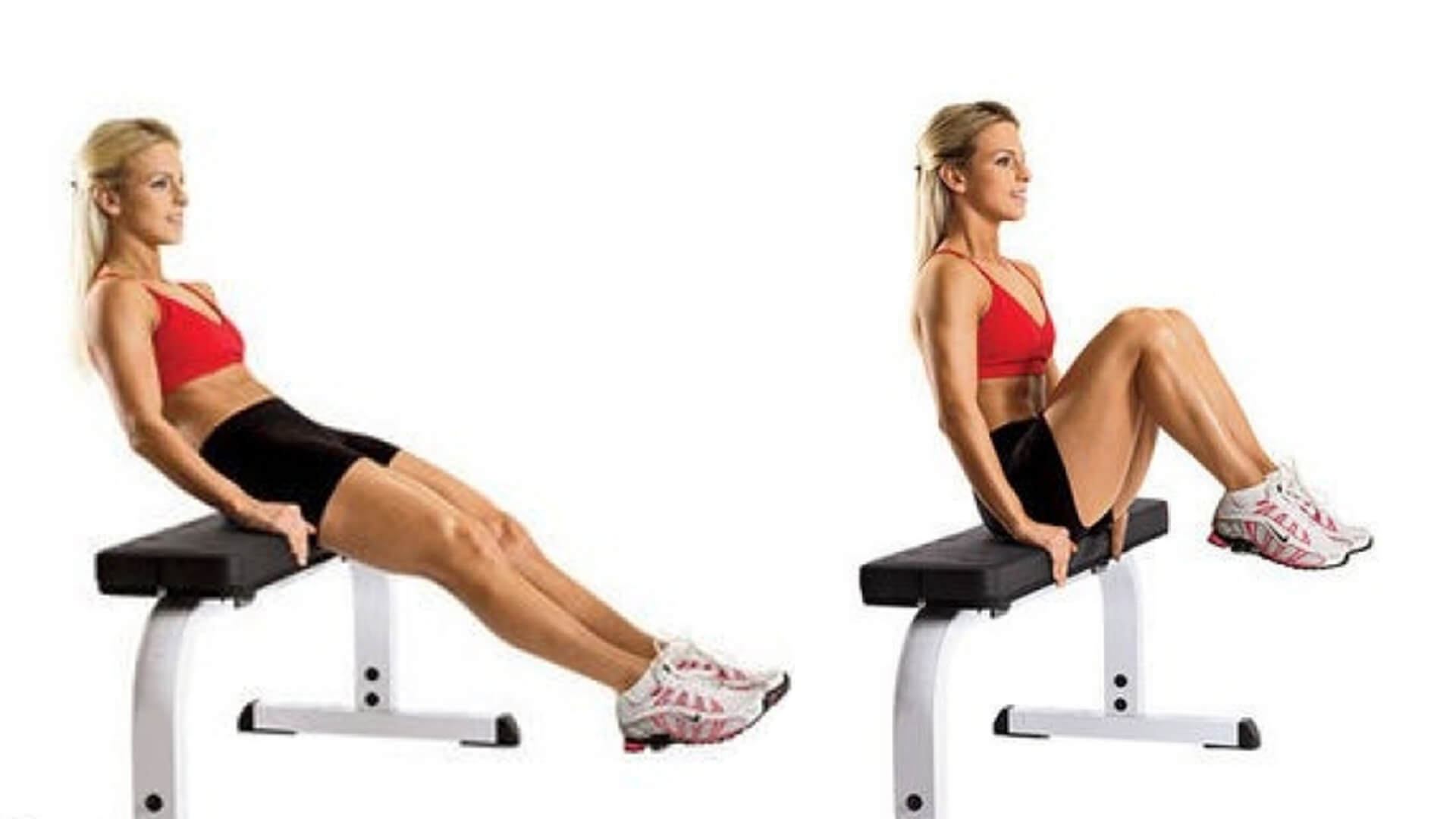
3. Reverse crunches
One of the most effective, maximally isolating exercises for the lower abs at home. In reverse crunches, the pelvis should lift off the floor due to the tension in the lower abdomen, which ensures its maximum isolation. It is also important not to push the pelvis too high, so as not to injure the spine and not remove the load from the lower abdomen, transferring it to other muscles.
You can perform twists either with a full lift of the legs, partial, or without involving the legs in the work at all, lifting only the pelvis. The greater the amplitude of movement, the more difficult the exercise. Therefore, the option should be selected based on physical fitness.
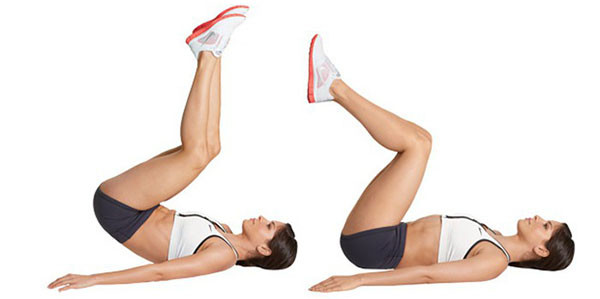
4. Bicycle
The bicycle exercise allows you to load not only the rectus ab muscle but also the external oblique muscles. Diagonal twists work the obliques and upper rectus muscles, while a dynamic movement that simulates cycling keeps the lower abdomen in constant tension.
When performing the technique, make sure that your lower back does not lift off the floor, twisting does not excessively rotate the body in different directions, and your hands do not pinch your neck due to unnecessary movements to the sides, and your chin does not touch your chest.
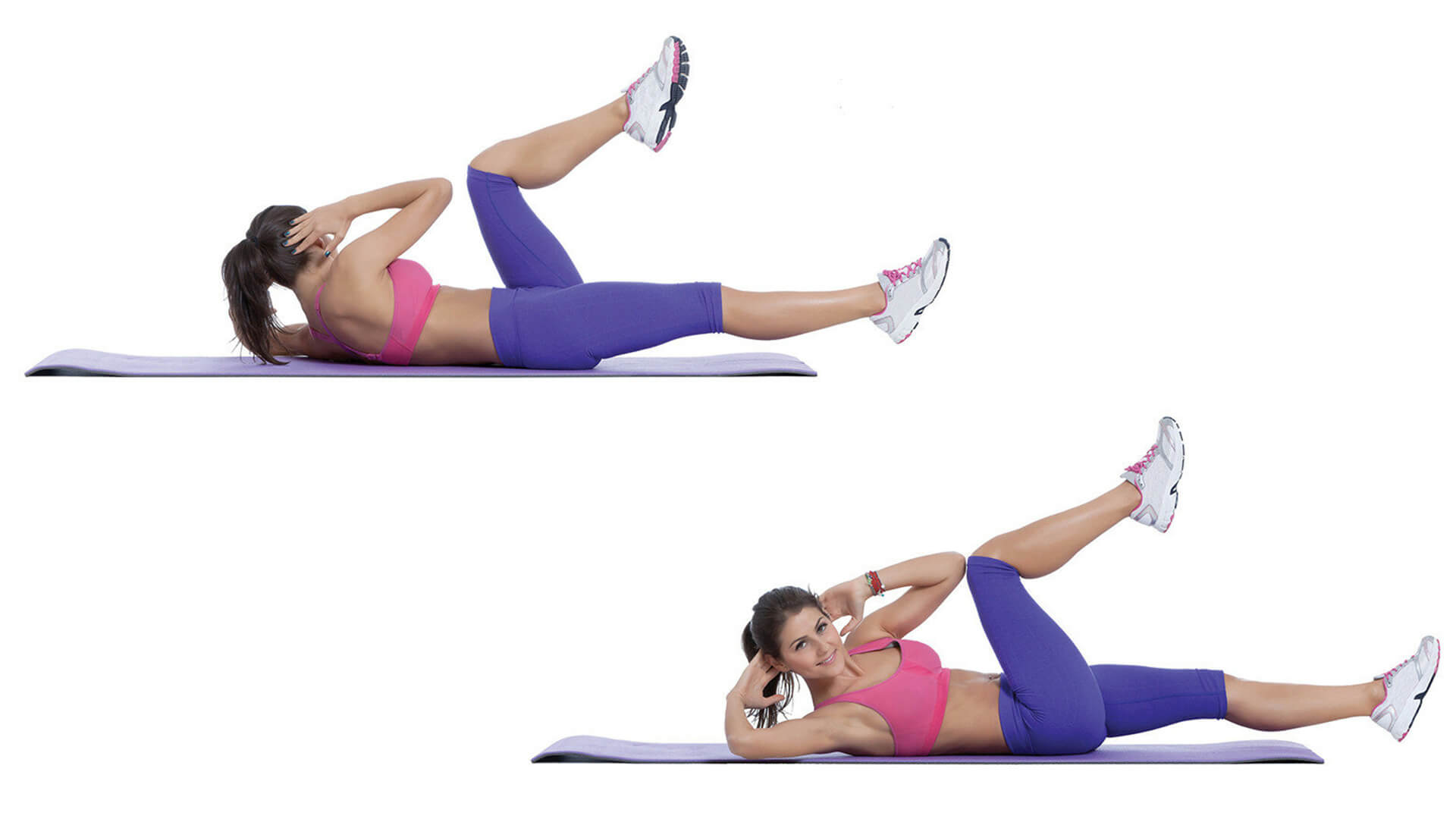
5. Circular movements with legs
This exercise is very effective and challenging; it is advisable to perform it with prepared abdominal muscles. To begin, you should take the correct starting position and control your abdominal muscles and spine throughout the entire approach.
With your palms resting on the floor behind your torso, you need to raise your legs, forming a corner. The back should be straight and the abdominal muscles tense. Next, circular movements are performed with the legs in one direction, then in the other direction. When rotating the legs in a circle through the bottom, the abdominal muscles should maintain a straight line of the spine, while preventing the heels from touching the floor. The movement is performed as long as necessary until the muscles feel tired and burning.
6. Plank or mountain climber knee raises
You can perform the climber either at a slow pace or at a fast pace, simulating running in place with your knees raised to your chest. The option depends on physical fitness and the condition of the spine. For those who are prohibited from intense impact loads, the exercise should be performed in a concentrated manner.
Having taken the correct plank position, tightening your abdominal muscles, not allowing your lower back to sag, exhale and pull your knees alternately to your chest while feeling the work of your lower abdomen. The number of repetitions is selected individually. Plank running can be performed for a time: from 30 to 90 seconds.
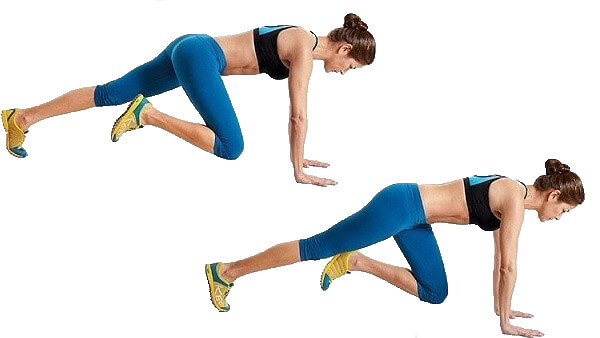
7. Scissors
In the scissors exercise, the lower abs are also intensely loaded, but its advantage is that the muscles do not relax during the entire approach. To avoid lifting your lower back off the floor, you can place your palms under your buttocks, and it is important to tense your abdominal muscles, pressing your spine into the floor. More prepared hands can be held along the body.
Holding both legs at an angle of 30-35 degrees, you need to alternate the position of your legs, sometimes crossing them, sometimes moving them to the sides, imitating scissors. The pace can be controlled; the stronger the abdominal muscles, the faster the pace can be. Breathing should be calm and should not be held under any circumstances.

8. Pulling your legs towards your arms
This exercise is performed as a sliding exercise; for this you do not need to purchase gliding discs; you can simply use socks or ordinary shoe covers on a slippery surface, such as linoleum. The main task is for your feet to glide well on the floor. This exercise is reminiscent of pulling up legs on a fitball or TRX loops.
To perform a slide, you must assume a plank position and avoid arching your lower back. As you exhale, using the force of the ab, especially the lower part, it is necessary to pull the knees to the chest, as if performing a reverse fold. As you inhale, you need to slowly return to the starting position without losing tension in the rectus ab muscle. You can perform pull-ups either with one leg at a time or with both legs at the same time.
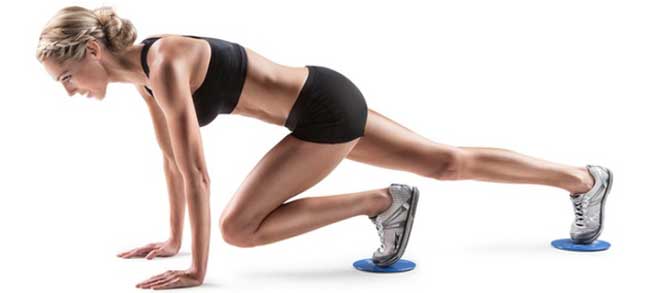
9. Raising the torso to one leg
Another option that resembles both a fold and a leg lift at the same time. In this exercise, the load falls on all the abdominal muscles, but due to the alternate lifting of the legs, the emphasis on the lower part is not as pronounced as when lifting both legs.
You need to lie on your back with your arms extended in front of you, holding them parallel. As you exhale, you lift your torso in one straight leg, and as you inhale, you return to the floor. Then the lift is performed to the other leg, and so alternates until the end of the approach.

[ad_2]

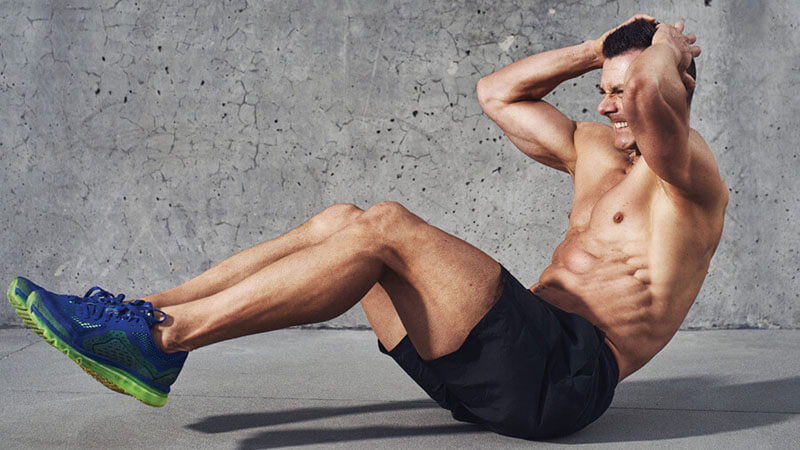
Leave a Comment